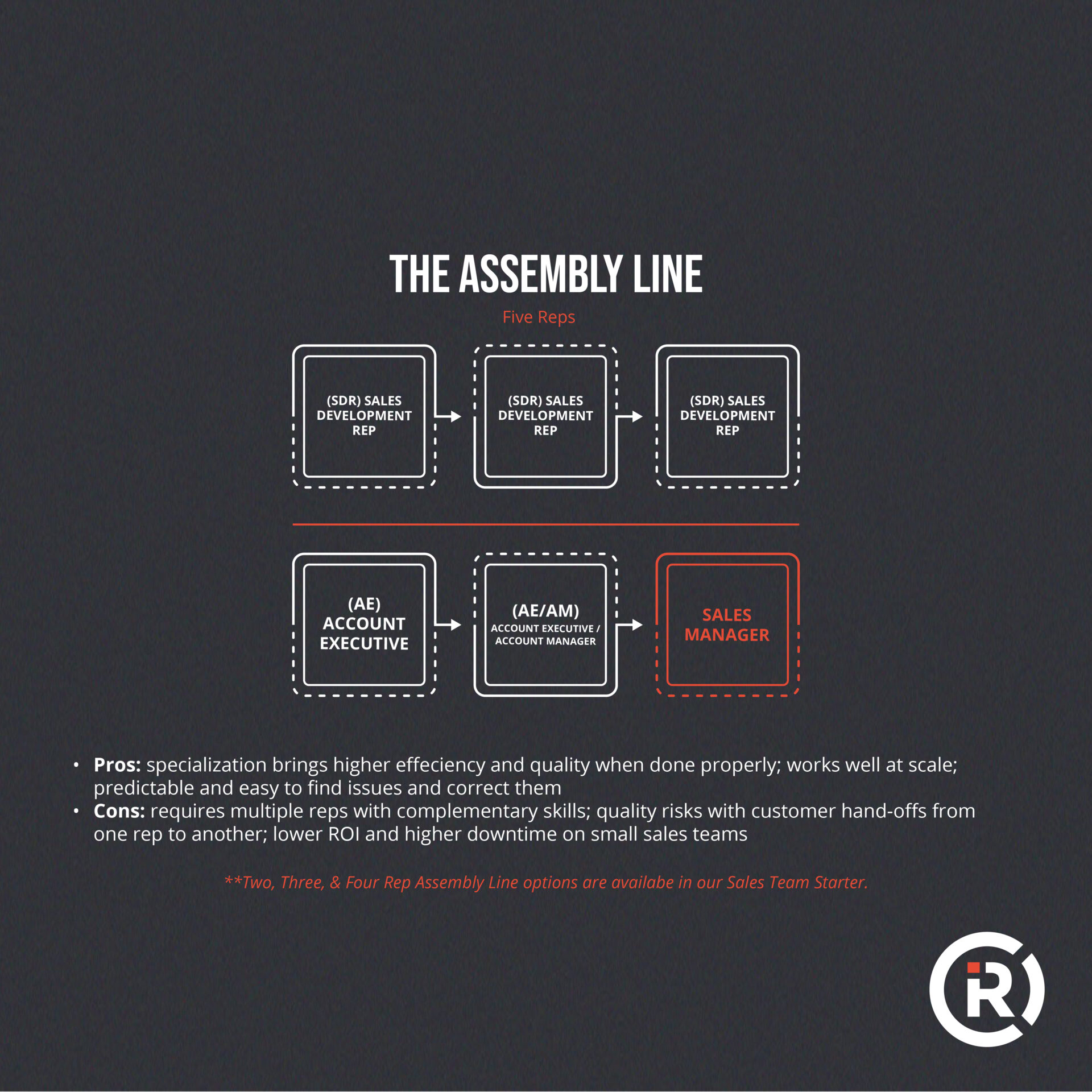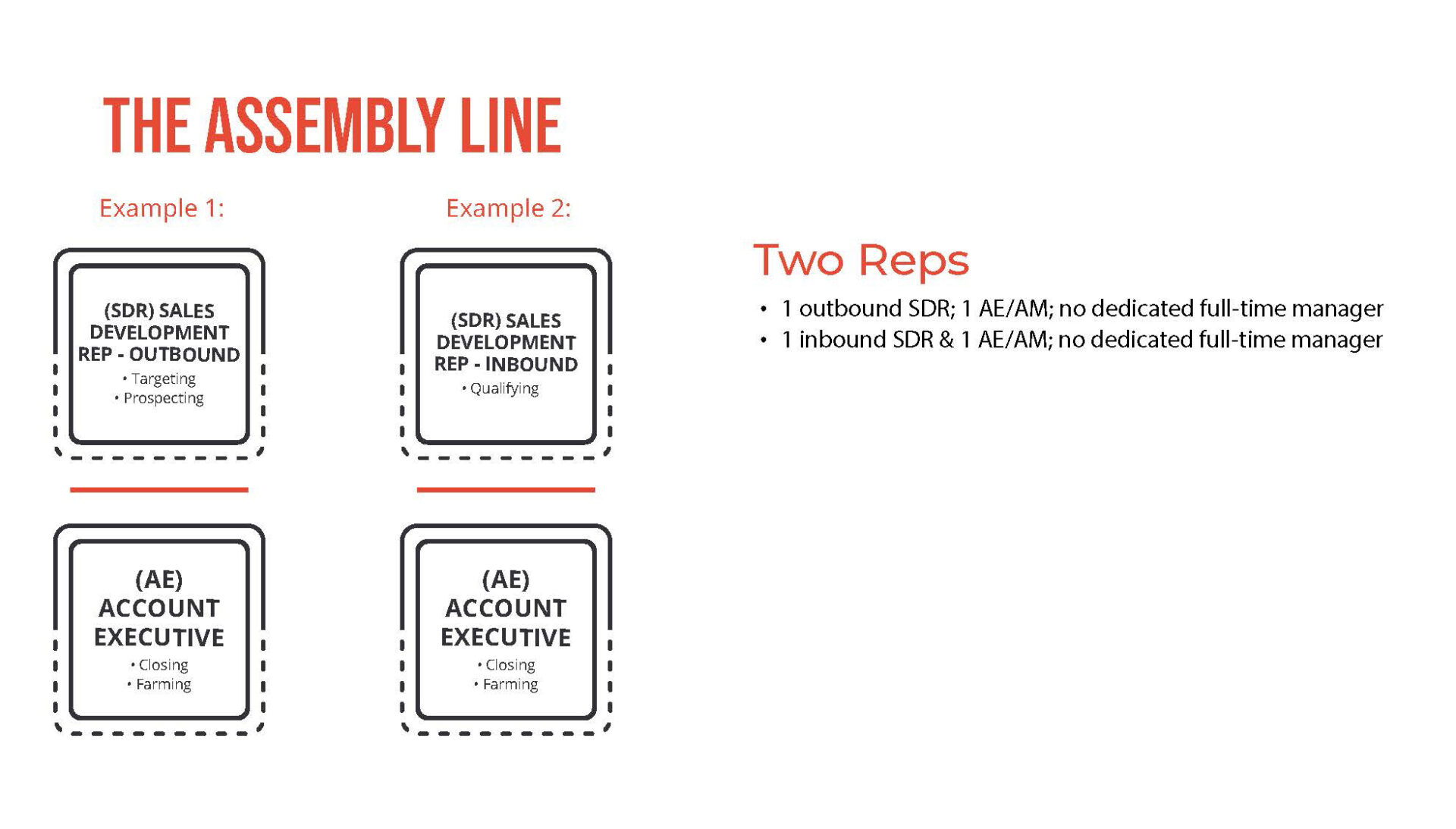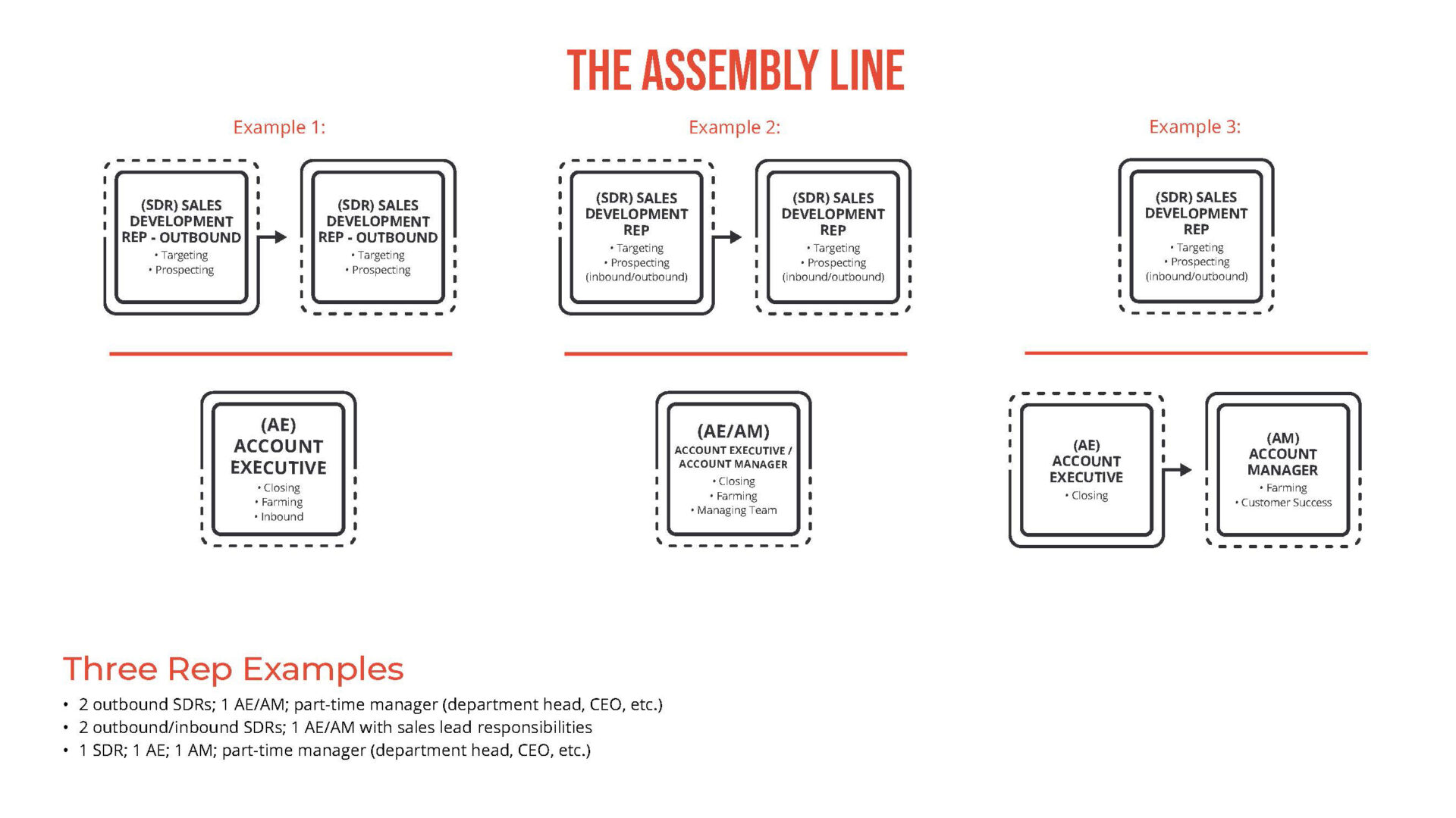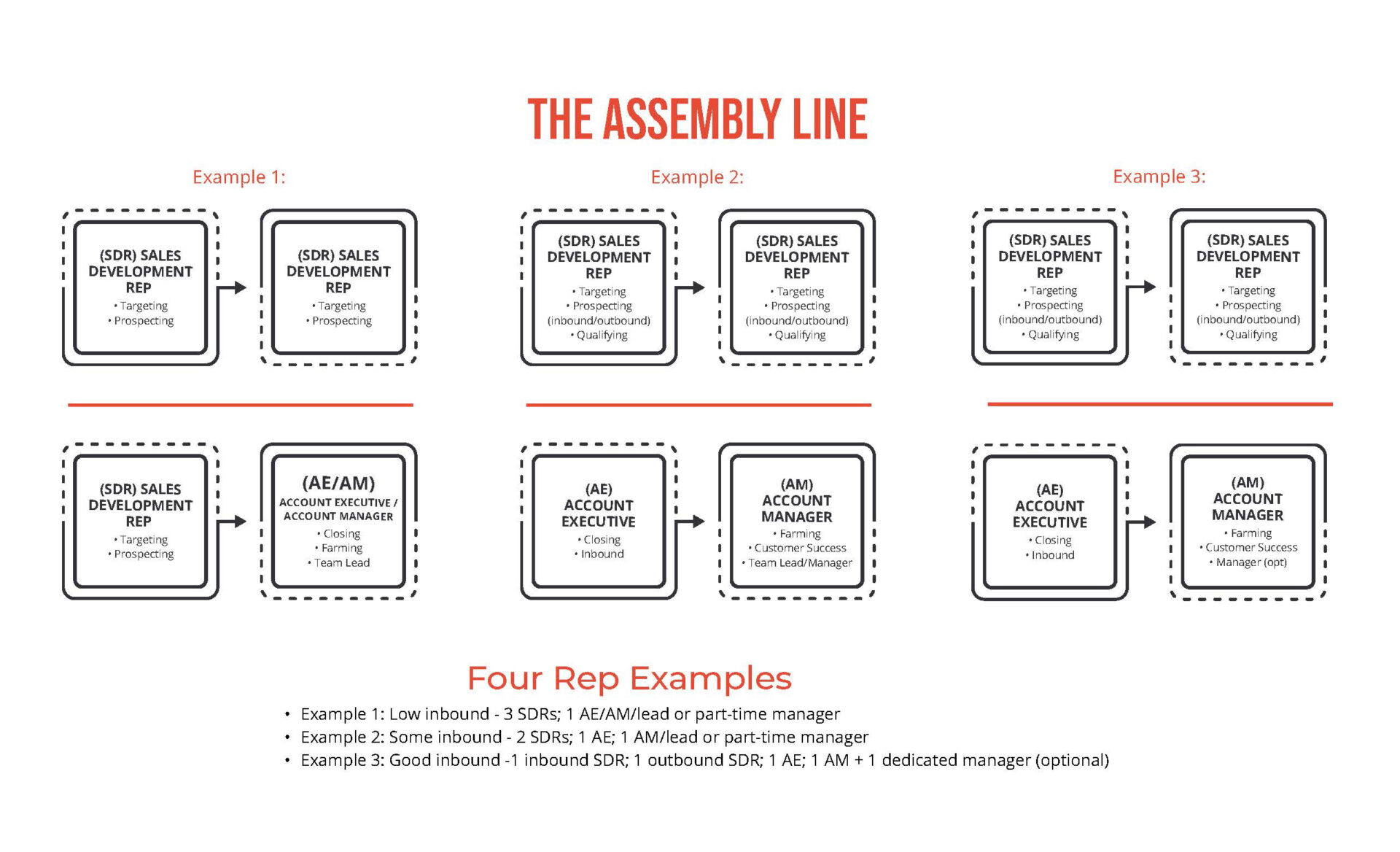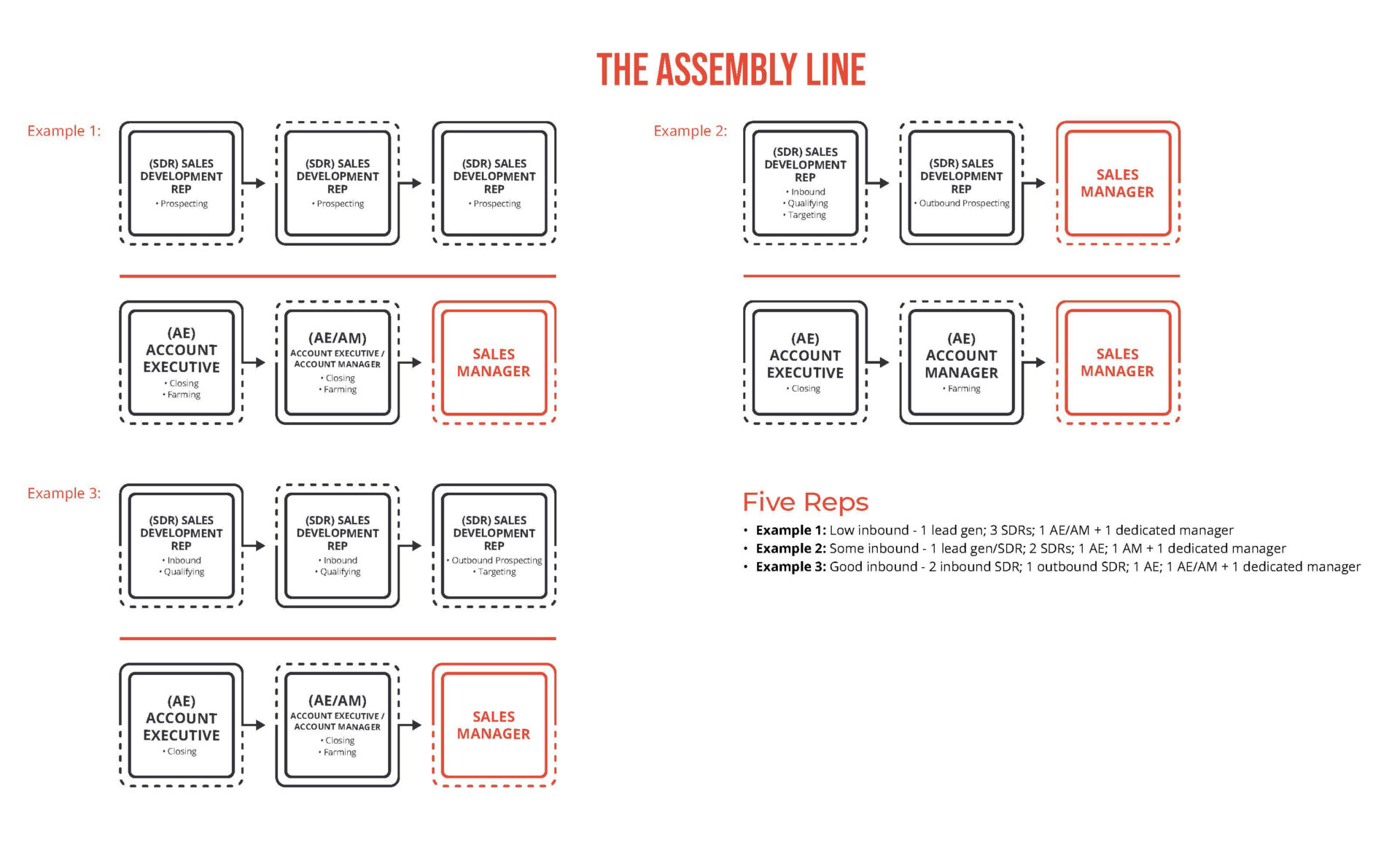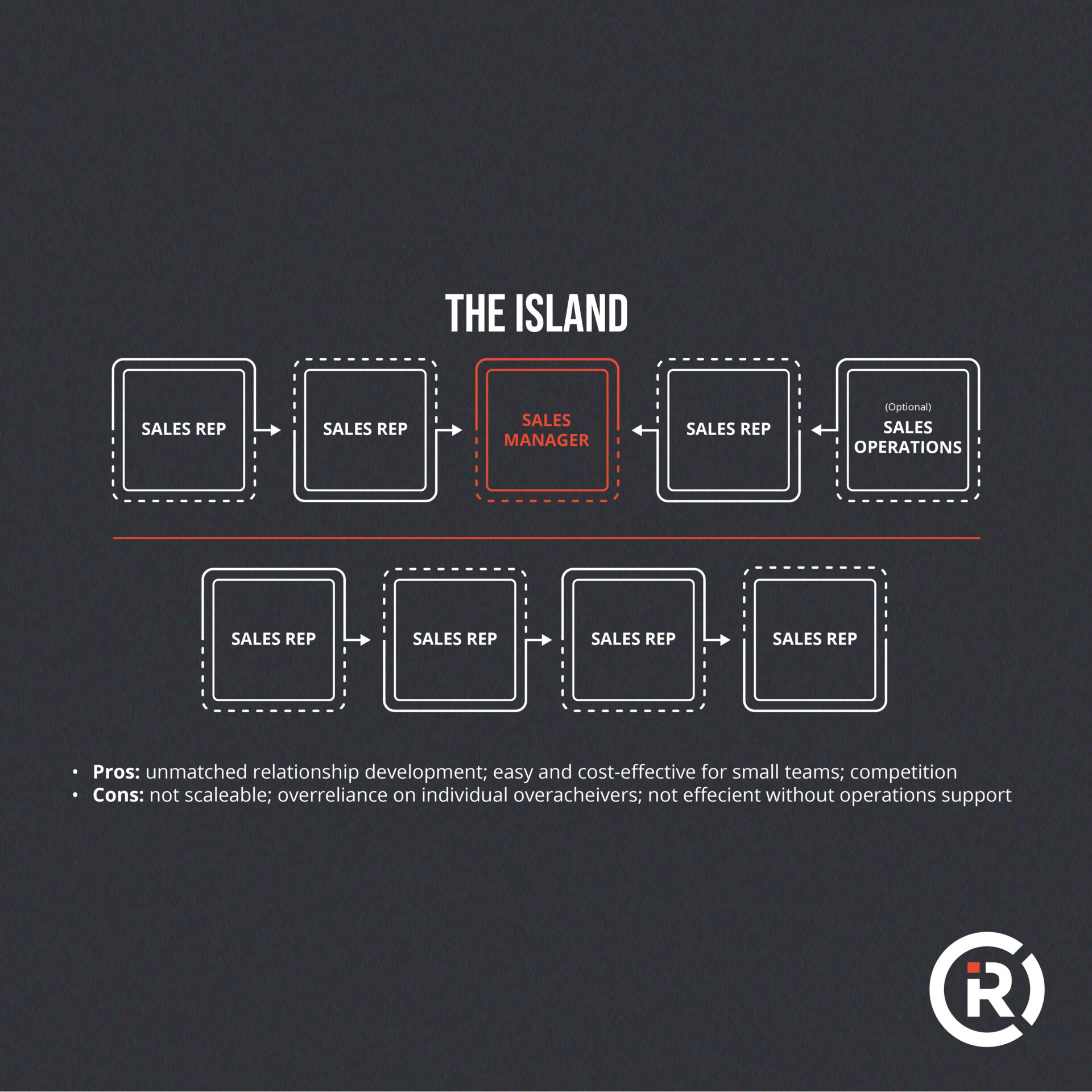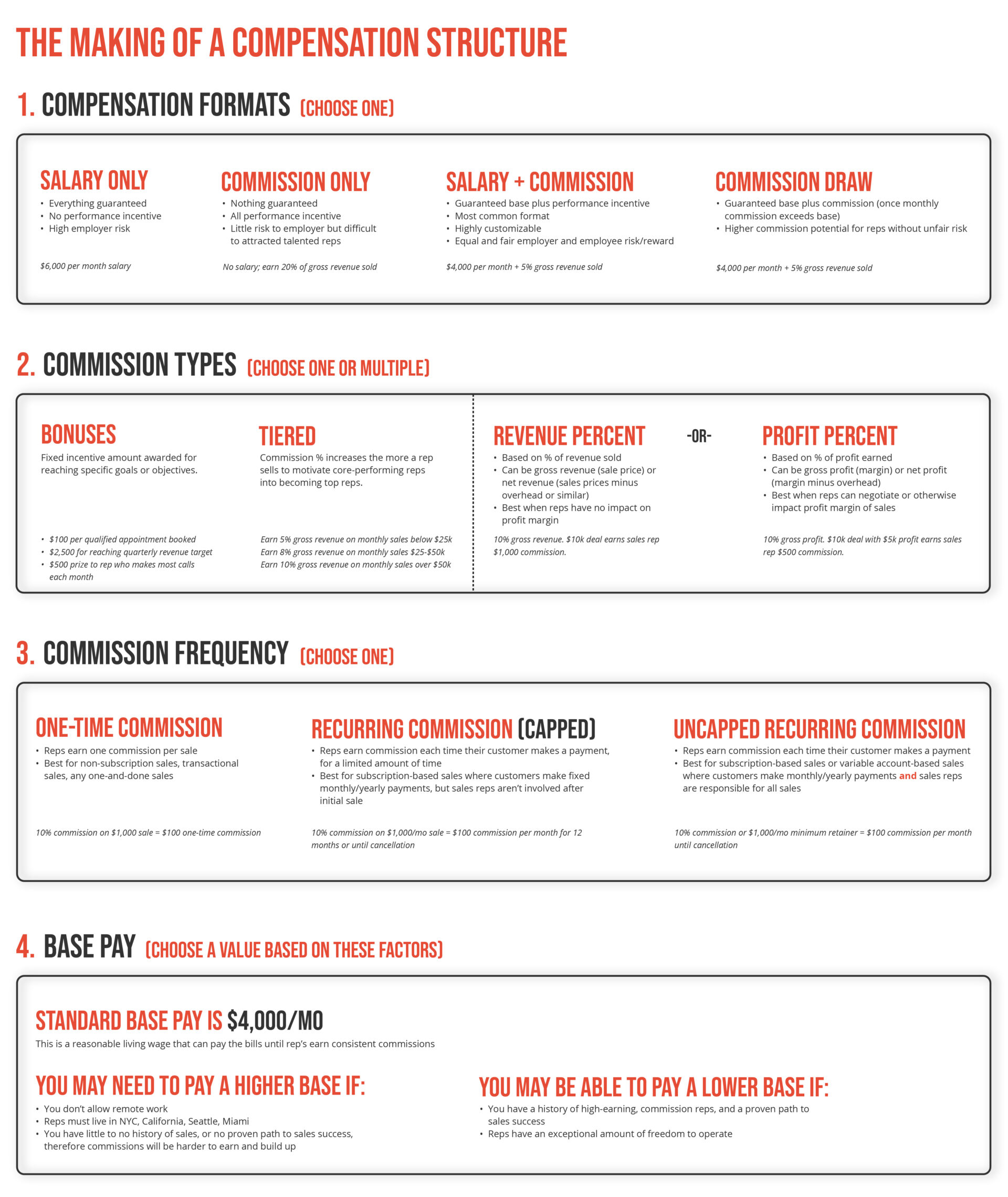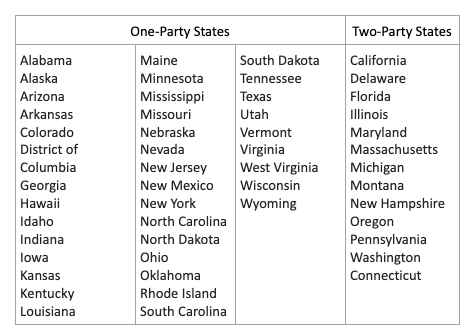The heartbeat of any thriving organization is its ability to drive revenue and secure a market presence. Building the right sales team is key to growth, resilience, and success.
However, this requires more than simply bringing in talented individuals. It involves defining the right sales strategy for your industry, creating a step-by-step sales process, establishing clear key performance indicators (KPIs), hiring the right people, and making continuous development a non-negotiable priority.
It’s vital to provide your employees with effective training and motivation to maximize their sales skills and transform them into a highly effective sales team.
Throughout this article, we’ll use a wide variety of industry terminology. We’ll define the terms as we go, but if there’s anything we don’t cover, please see our extensive glossary.
Here’s how to build a sales team that will give your organization an edge in today’s business landscape.
Step 1. Define the right sales strategy for your industry
The types of sales representatives you need to hire depends on a few things:
- Your price point.
- The products or services you sell.
- Your target audience.
Determine whether you need inbound sales reps, outbound, or both. Along with hiring the right type of sales representative, having the right sales methodology will be the foundation for the success of your sales team. It will give your team the framework to organize their approach when connecting with prospects.
Your price point is crucial when devising your sales strategy. With a lower price point, you should prioritize marketing over sales resources. With a higher price point, you’ll need more sales resources, yet marketing will still be important.
The strategy you choose may also impact your technology. With a marketing-heavy strategy, a CRM like ActiveCampaign will work. With a sales-only strategy, a CRM like Close would be effective. And, finally, with a strategy that is heavy on both sales AND marketing, a CRM like Hubspot is best.
If you need more insights into sales technology, check out our sales tools article.
Lastly, it’s important to determine how to target the right leads for your product or service. Targeting is finding potential leads and their contact information. By identifying potential customers through various channels like industry databases (such as Guidestar for nonprofits) and targeting tools such as Leadfuze, you can effectively target your efforts and allocate resources where they are most likely to yield the best results.
Here are a few potential lead sources you may consider:
- Targeting tools: Software solutions to find leads and their contact information.
- Lead lists: Leads and contact information purchased from a contractor.
- Industry databases: Databases, groups, and associations your targeted customer tends to be part of.
- Inbound leads: Leads who come to you through marketing or advertising.
- CRM leads: Past customers or backlogged leads.
- Outsourced: Leads found by a vendor through outsourced prospecting.
Some sales teams will only use one lead source – one source for potential customers – while others may use all of the above types of lead sources.
For example, in B2B sales, utilizing LinkedIn may be effective for finding potential clients. And for B2C sales, it may be more suitable to direct your outreach strategy toward direct mailers or a social media platform that directly connects with your target audience. Here’s our guide to boosting your sales on LinkedIn.
Step 2. Map out a step-by-step sales process
The sales process is the step-by-step process for turning prospects into customers, and it’s key to your team’s sales performance. If the sales manager wants their team to hit the target, they need to take the guesswork out of their process. They need to know where to go and in what order. Mapping out a step by step sales process requires you to look at what you want the customer to experience when engaging with your company.
Although a step-by-step sales process should be customized for your product and industry, there are a few common steps that can be included in your process.
Below you will find an example of a sales process for medium to high-priced B2B solutions. However, as the price point for your product gets lower you can first remove the needs assessment step, followed by the presentation and qualification steps to streamline your approach.
Qualifying means prioritizing your sales efforts on the best sales opportunities. These are deals that have a high chance of closing and earning high revenue and profit. If you spend time and resources on bad-fit prospects, you’ll have fewer sales and earn less revenue. Qualification is especially important in long sales cycles, as those can amplify the amount of time you waste on the wrong prospects.
- Prospecting: Identifying and reaching out to potential clients you have identified in your ideal client profile (ICP). An ICP is detailed descriptions of your ideal customers.
- Qualification: It’s important to spend your time with prospects who are a good fit and have a realistic chance of becoming a customer. A “qual call” doesn’t need to be its own call, but you need to qualify the contact you’re speaking with, the company they work for, and the opportunity as a whole.
- Needs Assessment: In the first or second call with a potential client, your team should do an in-depth discovery. A discovery call is a meeting where both parties learn if an opportunity is worth pursuing. It allows your team to ask a series of questions that uncover the prospect’s use case and any specific requirements they seek when purchasing a new product or service.
- Presentation: Once you understand the specific needs of the prospects, your goal is to showcase how your product or service is a viable solution for their use case. This of course should highlight what your product or service has to offer, but your team should also focus on personalizing the pitch to solve your prospect’s needs.
- Overcoming objections and negotiating: Whether in your presentation or sales follow-ups, overcoming objections is key to getting your prospect ready to purchase from you. This allows you the space to address and anticipate potential concerns, such as implementation, as well as discuss terms, pricing, and any customization they may need to become a customer.
- Closing the sale: Up until this point, the sales team has done an immense amount of work to guide your prospect along the sales process. Now is the time to secure the commitment. Closing deals can look like a variety of things and is dependent on your industry’s next steps, but usually it means a signed contract, agreement to a trial period, or purchasing your product or service.
Step 3. Establish the right KPIs for success
KPIs, or key performance indicators, are crucial sales targets necessary for success.
Setting strong KPIs is essential for business growth as they reveal how your organization is performing, provide guidance for your team’s objectives, and offer insight into the path to success. KPIs are measurable factors that reflect how effectively a team is achieving their business goals. For example, are you aiming to increase revenue, acquire new customers, expand into a new market, or boost your annual contract value (ACV)?
Once you’ve established your overall objective, you must then identify the metrics necessary to achieve those results. For instance, if acquiring new customers is your objective for this quarter, you may consider looking at the length of time it takes to acquire a new customer.
Below are three examples of other factors you could look at when it comes to acquiring new customers, but see our sales team structure article where we have much more detailed KPIs for each team structure:
- Lead generation rate: How many leads are you generating each week or month from your sales efforts? If you’re focused on cold calls, you may want to look at the number of sales calls that were made this month and how many of those turned into meetings.
- Conversion rate: This measures the amount of prospects you speak to that ultimately becomes a customer. You find this number by dividing the new number of clients acquired by the number of opportunities (leads) created.
- Customer acquisition cost (CAC): This is how much it costs to achieve one new customer. It will include any sales and marketing efforts related to acquiring a new customer, including advertising costs, sales rep salaries, and any other overhead expenses such as the cost of the CRM tool used. Find your CAC number by dividing the total acquisition costs by the total number of new clients within a given period.
The CAC KPI is important to make sure you are not over or underspending in your efforts to acquire new clients. It will also help you direct your efforts to the tactics that are financially best for your business model.
Step 4. Hire the right people
Hiring the right sales team members will be the foundation to your success. Just because they have sales experience doesn’t mean they have the right sales experience for your business.
It’s about finding the right person at the right time, who can bring as much knowledge as possible in areas like the product, industry, and customer. The rest is up to the company – to make them more knowledgeable and persuasive through training and technology, and to give them incentives.
When it comes to the hiring process, do the following to find the best sales reps for your team:
- Recruit for the experience you need: Whether you need to hire a sales rep or account executive for inbound or outbound sales, the goal is to look for a candidate that has relevant, positive experience with this exact role, relevant experience in this exact industry, or experience working at the companies they’ll now be calling on. Consider whether they have product, industry, or customer knowledge they can bring to your organization, and if they have a proven track record of meeting or exceeding goals within this role or industry.
- Define expectations: Do this prior to the interview process, even if it’s just preliminary numbers. You want to be able to ask questions in your interview around these potential metrics, such as quotas. It allows you to assess if your candidate has had previous experience at this volume and get their initial reactions to the role’s expectations.
- Develop skill-directed questions: Focus more on a candidate’s soft skills rather than their experience with a specific CRM. You will have a good understanding of the characteristics you are seeking for this role and should tailor your questions accordingly. Role-play scenarios are a great way to see how your candidate responds to specific sales situations.
For the skill-directed questions, here are some examples of role-play prompts:
- Imagine I was a prospect and you were a salesperson. How would you sell me our product (to the best of your current abilities)?
- Let’s go back in time and pretend we’re at your most recent sales role. I’m a prospect and you’re the sales person. How would you walk me through a sale?
Listen for the following positive and negative signs in their responses. They won’t ace the questions about selling your product – you’re just looking for how they approach it and how they sound when they answer.
Positive Signals:
- They ask questions first then sell later.
- They clarify details before beginning their response. For example, buyer demographics.
- They mention digging or follow-up questions.
Negative Signals:
- They immediately start pitching and selling to you.
- They sound “salesy” or off-putting.
- They seem embarrassed.
Step 5. Set Up an Onboarding Process
The next step is onboarding your new sales team. This step is important to ensuring your new reps are equipped with all the skills they need to be successful within their new role and your organization.
The length of onboarding can vary from a few weeks to a few months depending on the level of training your team needs. That said, your onboarding program should include anything your sales professionals need to be successful in their new role, such as:
- Company or product knowledge.
- Your company’s sales process and approach.
- The competitive landscape.
A well-planned onboarding program improves your team’s time to productivity.
Here are three tips for building a successful onboarding program:
- Set learning milestones: You want to know that your new reps are making progress as it relates to the training you have developed. Set key milestones within your training that check for comprehension on particular topics.
- Utilize role-playing exercises: These exercises enable your new sales rep to increase their confidence and practice their sales skills in a controlled environment. Role-playing facilitates learning through experience and repetition while providing them with challenges in a more structured setting.
- Practice and review: It’s important for the new hire to understand the material, but it’s even more important for them to demonstrate they can implement their new skills in various sales activities. For example, if you’re training on your cold calling phone script, review with your sales rep what needs to be covered on the call. Then have them make a cold call, and afterward set aside time for feedback on what went well and what areas have room for improvement.
Step 6. Train and retain top talent
Sales departments can experience high turnover and struggle to retain top talent because they often believe that once they have hired the right people, their job is done. However, once you have found the right person, you must nurture and grow that talent, starting with the onboarding process.
Unfortunately, this is where most organizations fail. It’s easy to hire a team and focus on goals, but if you truly want them to hit their sales goals, you need to focus on their development. Without ongoing learning and reinforcement on a systemic level, 84% of sales training is forgotten within the first 90 days.
That’s why continuous development is an important factor to improve retention, maximize your team’s performance potential, and encourage a company culture of continuous improvement. Your ongoing training program should cover everything from product knowledge and sales techniques to communication skills and customer service.
Even though development seems straightforward, it can be tough for companies to find the right starting point for their program.
Here are a few things to do when developing your training roadmap:
- Assess and identify needs: Development needs can vary from team to team, so it’s always a good idea to start developing your program based on where your team’s skill level is right now. A few things to assess include product knowledge, sales techniques, communication skills, and industry-specific training.
- Create your development roadmap: Once you’ve established where your team is with development needs, it’s time to create your initiatives for the team. Prioritize these in order of how much it would improve the business objectives. If it moves the business needle more, start your roadmap there and work your way down to less critical skills.
- Implement “outside” learning opportunities: If you or the sales leader within your organization is the one doing all the training, consider getting some outside resources to assist. A skill can be developed more efficiently by coming at it from a few different angles.
Ongoing training is essential to your team’s performance, and it’s worth the investment. Research shows that for every dollar you invest in sales training, you can expect $29 in incremental revenue. In fact, sales reps who receive as little as three hours of coaching per month exceed quota by 7%. This increases revenue by 25% and average close rates by 70%.
Step 7: Leverage technology
Modern sales tools like HubSpot and Salesforce are pivotal to today’s sales process. Technology helps sales professionals become more productive by automating repetitive tasks and giving real-time, data-driven insights into potential prospects.
Leveraging technology within your sales team can improve a variety of metrics including customer engagement, improved communication, and scalability rate.
Let’s take a look at how it can improve a few areas of your sales process:
- Data-driven strategies: With so much intent data out there, sales teams can target ICPs who are actively looking for a product or service like yours. They can do this with targeting tools like Dealfront and analyze the keywords they’re searching with Google Search Console. This allows you to reach out to potential prospects with the messaging they are using in their search efforts and connect quicker to their specific use case.
- Improved lead generation: With the right technology, such as LeadFuze, salespeople can find and qualify potential prospects quicker. Instead of combing through an endless list of people that may have outdated contact information, they can search the prospect directly and find all the right contact information within seconds.
- Scaling and growth: Sales process automation has made it possible for one sales rep to perform the work of two. With features like automated workflows and AI assistants handling outreach, sales reps are able to reach out to more accounts. This results in improved connection rates with potential prospects through predictive touchpoints.
Knowing how to build a sales team is just the beginning
Building a successful sales team is not a one-time achievement but an ongoing commitment to evolution and improvement.
Incorporating these seven essential steps into building your sales team helps ensure not only success for individual sales reps but also the lasting success of the entire team and your organization.
As we have discussed, building a highly effective sales team requires a multifaceted approach that requires you to identify the right sales strategy for your organization, develop a step-by-step sales process, set clear KPIs, and hire, develop, and retain the right sales professionals for the job.
Furthermore, leveraging technology has become a crucial step in ensuring a high-performing sales team in today’s sales world. Organizations that invest in building a strong sales team and leverage the right sales solutions and processes will be better positioned for long-term sustainable success.
Use our Sales Team Starter to build and improve your sales team
Our Sales Team Starter is a blueprint for you to design your own sales team. Created by professional sales consultants responsible for more than $100 million in sales, its purpose is to make your sales team function and perform better than it did last month.
This digital product is continually updated, improved, and expanded. It includes templates, examples, and instructions on how to create your own. It offers professional guidance from industry experts on:
- Hiring sales reps.
- Prospecting strategies.
- Sales management.
- Commission structures.
- Techniques.
- Technology.
- Automation.
- Sales methodologies.
- Other sales channels.
The Sales Team Starter also includes these resources:
- Compensation modeler that allows you to quickly pinpoint a plan that will incentivize your reps without jeopardizing profits, based on your sales numbers or estimates.
- CRM selection tool that leverages our countless hours of research and experience with dozens of CRMs. It will help you sift through pricing tiers, compare capabilities, and choose the perfect CRM for your company.
- Quota generator for determining how many phone calls and emails your sales team needs to make in order to hit your sales goals.
Buy our Sales Team Starter today.


